Eight cancer survivors and their doctors from throughout City of Hope’s national cancer system will celebrate the joy and music of life during the 135th Rose Parade on Jan. 1 by riding on City of Hope’s float.
The float, titled “A Lovely Day for Hope,” will spotlight patients and their physicians from City of Hope® locations in Los Angeles, Orange County, Chicago, Atlanta and Phoenix.
Each survivor — from a salsa singer who feared he would never perform again after being diagnosed with tongue cancer to a breast cancer patient who beat the odds thanks to a second opinion she received at City of Hope — has a profound story about how City of Hope provided lifesaving therapies and compassionate care that gave them another chance at life.
This year’s float — nearly 50 feet long and 22 feet tall — highlights the parade theme “Celebrating a World of Music: The Universal Language” with a carousel representing the cyclical nature of life as well as forward momentum signifying City of Hope’s evolution and growth as it expands its supportive care, innovative treatments and leading-edge clinical trials to more patients, families and communities across the nation. Butterflies and doves symbolize new beginnings.
“City of Hope’s 50th anniversary participation in the Rose Parade reminds the world that because of our research and our unique care for patients, we are here for everyone. It makes clear once again that the work we do benefits people not only in our own community, but around the world,” said Stephen J. Forman, M.D., renowned City of Hope hematologist-oncologist, director of the Hematologic Malignancies Research Institute and a professor in the Department of Hematology & Hematopoietic Cell Transplantation. Forman has walked in the Rose Parade alongside the City of Hope float each year for the last decade. "The connections we make among the multitudes of people along the parade route have everything to do with who we are and what City of Hope represents to our community. All of us have been touched by cancer one way or another, and many spectators along the route share in that experience.”
Each survivor representing City of Hope’s national cancer treatment center chose to share their cancer journey as a reminder that no one walks alone. The participating patients are:
Hector Nuñez, 70, Chicago: Singer Hector Nuñez found himself in his doctor’s office after discovering a lump on his tongue that quickly swelled to the size of a golf ball. His biopsy showed that Nuñez had Stage 4 squamous cell carcinoma. Due to the cancer’s aggressiveness, Nuñez was told that treatment would likely result in the loss of his tongue. The thought was unbearable.
“If I couldn’t communicate with my wife, kids or grandkids, I would rather be dead. Honest to God,” Nuñez said.
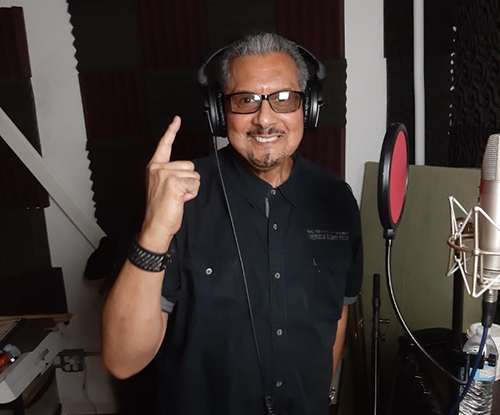
Nuñez has performed for 52 years. He started with his father’s group when he was 13 years old. In 1977, at the age of 24, Nuñez started a salsa band, Orquesta Yambo, which lasted for 11 years. When the group performed in Minneapolis, it caught the attention of music icon Prince, which resulted in access to a recording studio to work on their music.
With so much at stake after his cancer diagnosis, Nuñez pursued a second opinion at City of Hope Cancer Center Chicago, which made all the difference. From the moment he arrived, Nuñez felt strongly connected to his care team, which included Karen Smorowski, M.D., a radiation oncologist. With his quality of life in mind, his team told him they could remove the tumor and reconstruct his tongue.
Nuñez underwent a complex, 13-hour surgery to remove four lymph nodes along with a 4-centimeter tumor on his tongue.
“I felt like part of a family. My care team called my wife every two hours to give her updates on everything going on. I have never heard of any doctor doing that,” he recalled.
After successful surgery, Nuñez underwent chemotherapy and radiation treatment. By October 2016, follow-up testing showed no evidence of cancer.
Today, Nuñez is planning an Orquesta Yambo reunion, which will feature a song about his cancer journey.
“I don’t know how much time I will be on the face of this Earth, but I can tell you that when I’m able to get up every day and can still eat, talk and sing, that’s a true blessing. I owe my life to City of Hope Chicago,” he said.
Christine Chen, Santa Fe, New Mexico: Minutes after giving birth to her daughter in 2018, Christine Chen’s doctors noticed a large mass the size of a watermelon in her abdomen that had been concealed by her pregnancy.
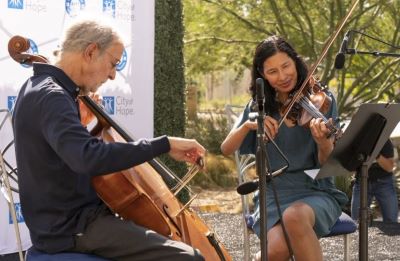
“Twelve hours after my daughter was born, I was being seen by an oncologist. It was pretty wild,” said Chen, a professional violinist and humanities professor at Saint John’s College in Santa Fe, New Mexico. Further testing revealed that she had a rare desmoid tumor. Six rounds of aggressive chemotherapy shrank her tumor to the size of a small pickle. Unfortunately, her chemotherapy led to something extremely rare. She developed acute myeloid leukemia.
Chen would need a stem cell transplant, so she came to City of Hope Los Angeles to start her cancer treatment with internationally recognized hematologist Stephen J. Forman, M.D., director of City of Hope’s Hematologic Malignancies Research Institute. But finding Chen a bone marrow donor posed a challenge — only 9% of registered donors in the Be The Match bone marrow registry are of Asian descent. Enter Andrew Qin of Portland, Oregon, who had joined the Be The Match registry a few years earlier during a donor drive at his workplace. He was a perfect match for Chen. He didn’t hesitate to donate his stem cells, even during the pandemic, enabling Chen to receive a lifesaving transplant.
While recovering from the transplant, since no visitors were allowed, Chen had her violin with her and played it often.
“Music has always been part of my life. Playing the violin was my lifeline. It brought me great comfort,” said Chen, who has been in remission since 2020 and met Qin for the first time at City of Hope’s 46th Annual Bone Marrow Transplant Reunion — during which she also performed a musical duet with Forman, who plays the cello.
This year’s Rose Parade theme strikes a chord with Chen.
“We can all respond to music, in joy and in grief. Music unites us all and brings us together,” she said.
Read more of Chen’s story here.
Paul Edmonds, 67, Desert Hot Springs, California: Thanks to City of Hope’s leading-edge bone marrow transplant program, Edmonds is one of just five people in the world to achieve remission from HIV after receiving stem cells from a donor with a rare genetic mutation.
In 1988, Paul Edmonds was diagnosed with HIV/AIDS and never expected to survive. Amazingly, he lived with HIV for more than 30 years.
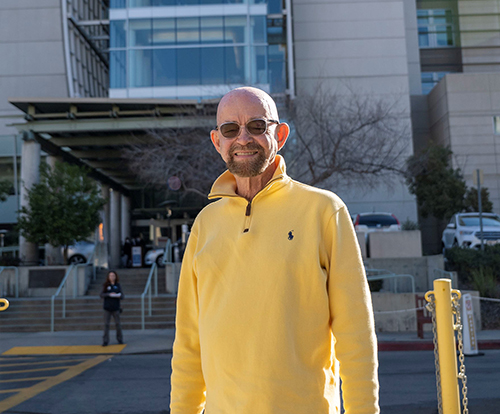
In 2018, Edmonds was diagnosed with acute myeloid leukemia and started his cancer treatment at City of Hope Los Angeles with a multidisciplinary care team, including Jana Dickter, M.D., associate clinical professor in City of Hope’s Division of Infectious Diseases, Department of Medicine.
“I didn’t allow myself to go to the worst-case scenario because I had dealt with HIV for so many years. I was much better prepared to approach this and deal with it,” Edmonds said about his cancer diagnosis.
Edmonds underwent different therapies to achieve remission, a requirement prior to receiving a stem cell transplant. After undergoing chemotherapy, he received stem cells from an unrelated donor who had a rare genetic mutation that is resistant to HIV. Edmonds’ leukemia went into remission — and so did his HIV.
“We were thrilled to let him know that his HIV is in remission and he no longer needs to take the antiretroviral therapy that he had been on for over 30 years. Now he can celebrate this medical milestone,” Dickter said.
Edmonds’ story brings hope to many people. After losing friends and loved ones to the international AIDS epidemic in the 1980s, more than three decades later, Edmonds is grateful to be alive and healthy.
For more Edmonds’ story, go here.
Sonia Ray, 47, Atlanta: In 2011, Sonia Ray, a native of Mexico, felt pain and a lump in her left breast. Because she was only 34 years old and had no family history of breast cancer, Ray’s doctor at the time told her she did not need a mammogram.
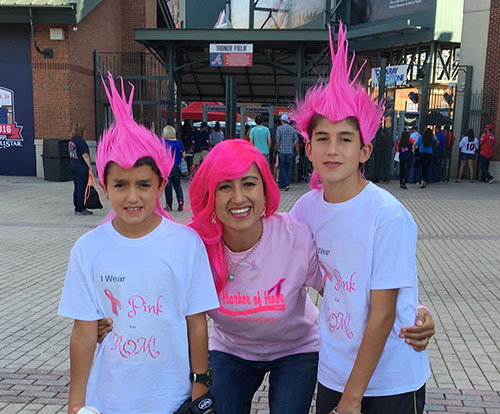
But Ray knew something wasn’t right. “I insisted on a mammogram and said, ‘I am not leaving this office until I get one.’ Sure enough, they discovered a 5-centimeter mass on my breast,” Ray said. She was diagnosed with aggressive Stage 3 HER2-positive breast cancer.
A mother of two young boys, ages 3 and 5 at the time, the news devastated Ray. She eventually underwent a double mastectomy, two years of chemotherapy and 33 rounds of radiation.
Ray went into remission, but in 2018 the cancer returned in lymph nodes in her neck. Doctors advised her to go home, tell her family and get her affairs in order because she only had two years to live.
Ray was determined to fight her second battle with cancer, and that’s when she found City of Hope Cancer Center Atlanta. “City of Hope was ready for me,” Ray said, adding that a strong faith also helped her stay centered. “City of Hope explained to me that about 5-7% of patients with HER2-positive breast cancer have a recurrence such as this at around the five-year mark. Never once did they put an expiration date on my life, and that’s when I knew I was going to beat cancer yet again,” she said.
After surviving cancer twice, Ray co-founded a nonprofit foundation, Harbor of Hope, which serves breast cancer patients in Atlanta’s southside. Ray and volunteers provide care bags with wigs, hats, bras and scarves to newly diagnosed breast cancer patients from the underserved community.
Ray also reminds breast cancer patients that they are their strongest advocates.
“Never be afraid to consider a second opinion. You never fight alone.”
Jonathan Azu, 46, Los Angeles: Jonathan Azu, music industry executive and a board member of City of Hope’s Music, Film and Entertainment Industry (MFEI) fundraising group, found out he had metastatic prostate cancer when his mother, a retired orthopedic radiologic technologist, encouraged him to get a baseline prostate-specific antigen (PSA) screening, which detects signs of prostate cancer in the blood.
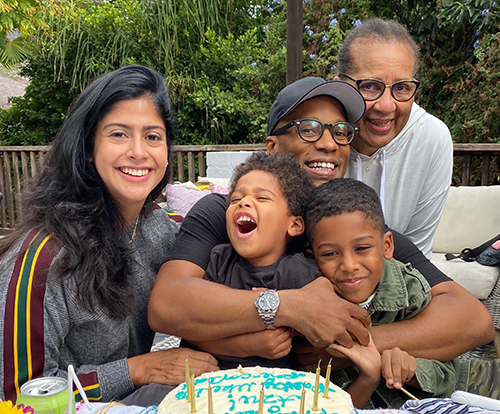
With thoughts of his father and uncle, who both battled metastatic prostate cancer, on his mind, Azu listened to his mother.
After multiple PSA tests, an MRI (magnetic resonance imaging) scan and two biopsies, the results showed that Azu had an aggressive form of prostate cancer. Azu was referred to urologic surgeon Clayton Lau, M.D., chief of the Division of Urology and Urologic Oncology and director of the Prostate Cancer Program at City of Hope Los Angeles.
“Knowing he had progression of disease, and given his young age and strong family history, I recommended surgery,” Lau said. “It would give him the best chance of a cure, and there is a good chance of recovery from side effects.”
Lau performed a robotic prostatectomy, which results in less blood loss and quicker recovery with fewer side effects than traditional surgery. To date, City of Hope has performed more than 8,500 prostate robotic surgeries. Now seven months out from surgery, Azu is feeling great and is back to his normal routine. City of Hope helped him manage his recovery with minimal side effects.
Due to the lack of screening and preventive measures in communities of color, Azu pledged to bring awareness to the work being done by City of Hope‘s Division of Health Equities by chairing MFEI’s annual Closing the Care Gap health care equity event.
“I am dedicated more than ever to assisting the Division of Health Equities at City of Hope in providing more early screening education and better access to health care for people who look like me,” Azu said.
To read more about Azu’s journey, go here.
Onjalai Brown, Phoenix: In 2021, one year after losing her best friend and younger sister, Jewel, to triple-negative breast cancer, Onjalai Brown had to deal with her own breast cancer diagnosis at a young age as well.
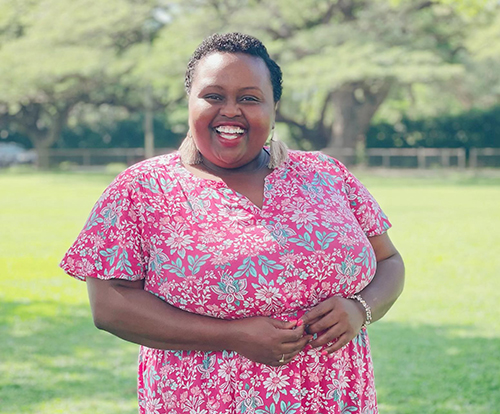
Brown, just 37, received a phone call about her biopsy results while on vacation in Hawaii. She was diagnosed with Stage 2 invasive ductal carcinoma (IDC). IDC is a type of breast cancer that develops in the milk ducts and spreads to surrounding breast tissue.
“I remember looking up at the sky and seeing a rainbow. It was my sign of hope,” Brown said. “I believed I would survive, even if history would tell me different.”
What she experienced during her treatment journey, though, was unexpected. Brown went through a divorce, suffered a miscarriage and relocated to a different state. When her initial efforts to find health care hit a wall, she went to a dark place, even considering suicide.
Brown was forced to deal with a series of decisions about traveling for care, surgical options, insurance and housing. She ultimately made the life-changing decision to move beyond her life in Dallas to seek a second opinion at City of Hope Phoenix.
“It was important for me to seek the best care possible, even if that meant traveling over 1,000 miles away,” she said.
Genetic testing at City of Hope Cancer Center Phoenix revealed Brown carried the BRCA2 gene, which did not surprise her. On her mother’s side, eight women had been diagnosed with breast cancer and four men with prostate cancer, both cancer types associated with the BRCA gene mutation.
Based on her genetic testing results and medical records, Brown’s care team went to work on a treatment plan. Radiation oncologist Marnee Spierer, M.D., concluded a lumpectomy would take care of the tumor. However, lymph nodes removed for testing revealed that microscopic amounts of cancer had spread.
Brown underwent 20 rounds of chemotherapy and 36 rounds of radiation. She has been in full remission for a year and will celebrate her 38th birthday on Dec. 28.
Kathy Miller Willahan, Huntington Beach, California: After initially beating breast cancer in 2002 and having both breasts removed, Kathy Miller Willahan, 74, never expected to deal with a second cancer diagnosis over a decade later. In 2017, Willahan was diagnosed with Stage 4 mantle cell lymphoma, a rare form of non-Hodgkin’s lymphoma.
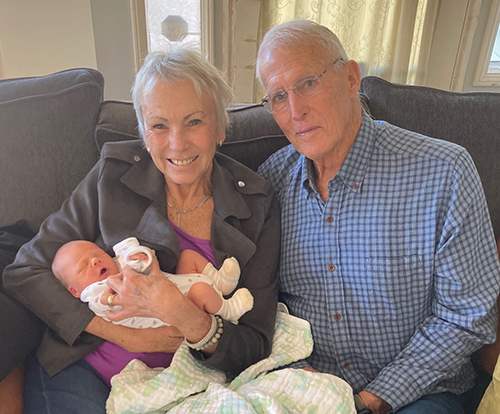
After five years of attempting various treatments, her cancer kept returning. Willahan was referred to Tanya Siddiqi, M.D., hematologist-oncologist at City of Hope, to see if she was a candidate for a new innovative treatment known as chimeric antigen receptor (CAR) T cell therapy.
City of Hope is an international leader in the CAR T research and treatment. CAR T cell therapy involves taking a patient’s T cells (a type of white blood cell that helps fight disease) from the patient’s blood. The cells are reprogrammed with a CAR and multiplied in a City of Hope laboratory, then reinfused into the patient, where they detect and destroy cancer cells.
During Willahan’s first treatment with CAR T cell therapy, the manufactured cells did not replicate the way they were supposed to. Siddiqi recommended a second round of therapy, which worked.
“During recovery, there were days that were very challenging, but then it felt like a rebirth, literally,” Willahan said. “I had to learn how to walk again and use a phone. It was a process of coming back into the world. Thanks to City of Hope, I can enjoy my family, especially my new great-grandson, travel and pickleball.”
Willahan signed one of the construction beams before it was installed at City of Hope Orange County Lennar Foundation Cancer Center, where she continues to go for follow-up appointments.
“That was a proud moment for me. I felt I was part of City of Hope’s legacy,” she said.
Ian MacLeod, San Juan Capistrano, California: Acute myeloid leukemia survivor Ian MacLeod will walk alongside the float with his doctor Amrita Krishnan, M.D., executive medical director of hematology, City of Hope Orange County; director of the Judy and Bernard Briskin Multiple Myeloma Center; and professor in the Department of Hematology & Hematopoietic Cell Transplantation.
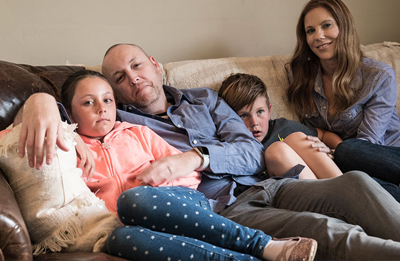
It seemed to happen overnight. One day MacLeod was healthy — the next, he had sharp pain in his abdomen. Blood tests performed by his primary care doctor were conclusive. He had leukemia so aggressive that he was hospitalized and receiving chemotherapy within a week of his diagnosis.
That was in 2013. The then-34-year-old marathon runner, husband and father of two endured several rounds of grueling chemotherapy and radiation. Because his cancer was so formidable, and because he had two mutations in his DNA that were driving its quick advancement, MacLeod was told he needed a stem cell transplant. His chances of finding a viable match for the transplant were dim: just 25%. But testing showed his brother Adam was a perfect match. The transplant would save his life.
Today, 10 years post-transplant, MacLeod is in remission and says he is not simply surviving, but thriving. He is now a certified meditation instructor who helps cancer patients grapple with anxiety and fear.
“I’m lucky enough to have that hindsight of knowing what it’s like to almost die,” he says. “I now understand that focusing on the past and the future doesn’t pay you dividends. I do not procrastinate joy. Right now is the time to experience all the things you have.”
